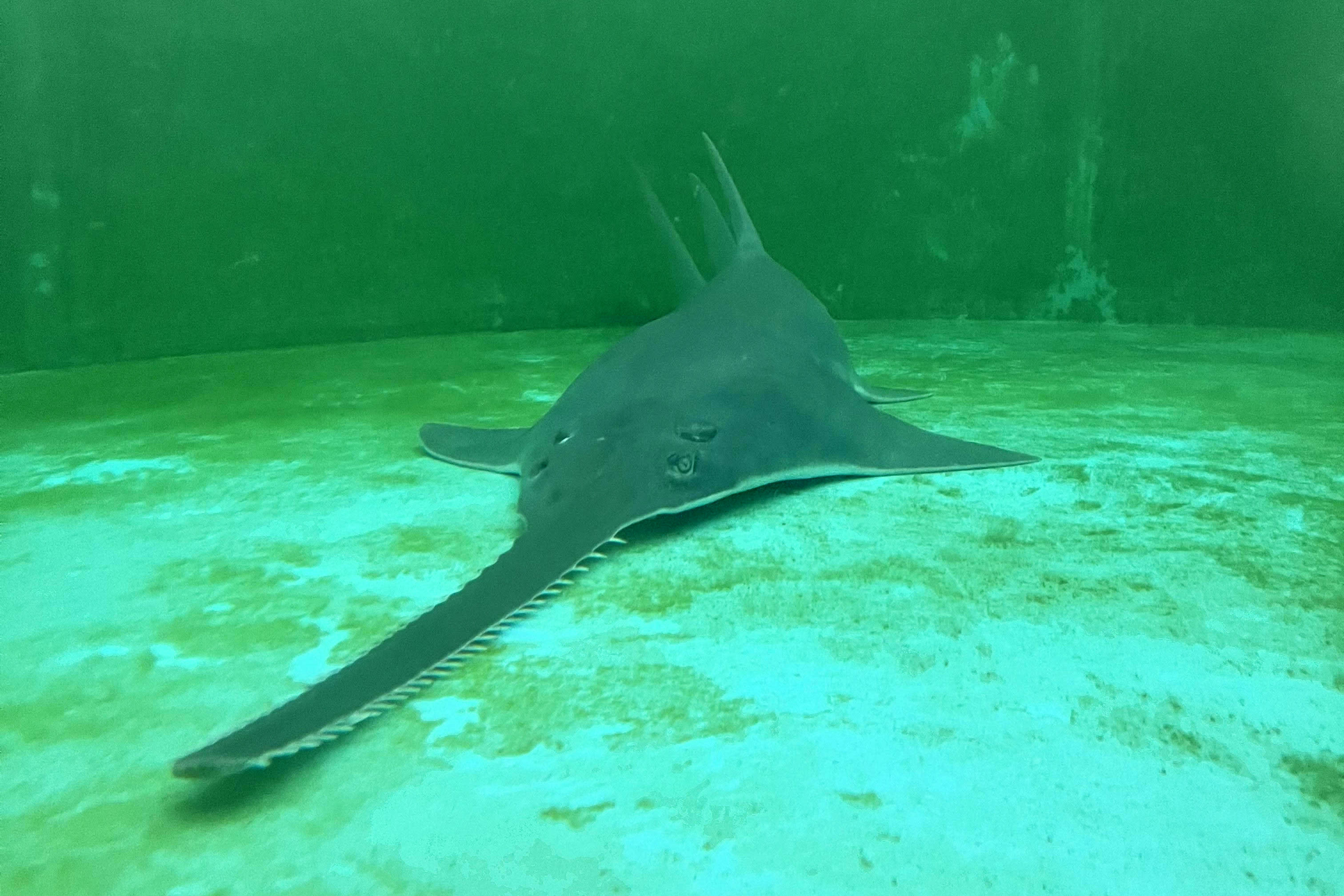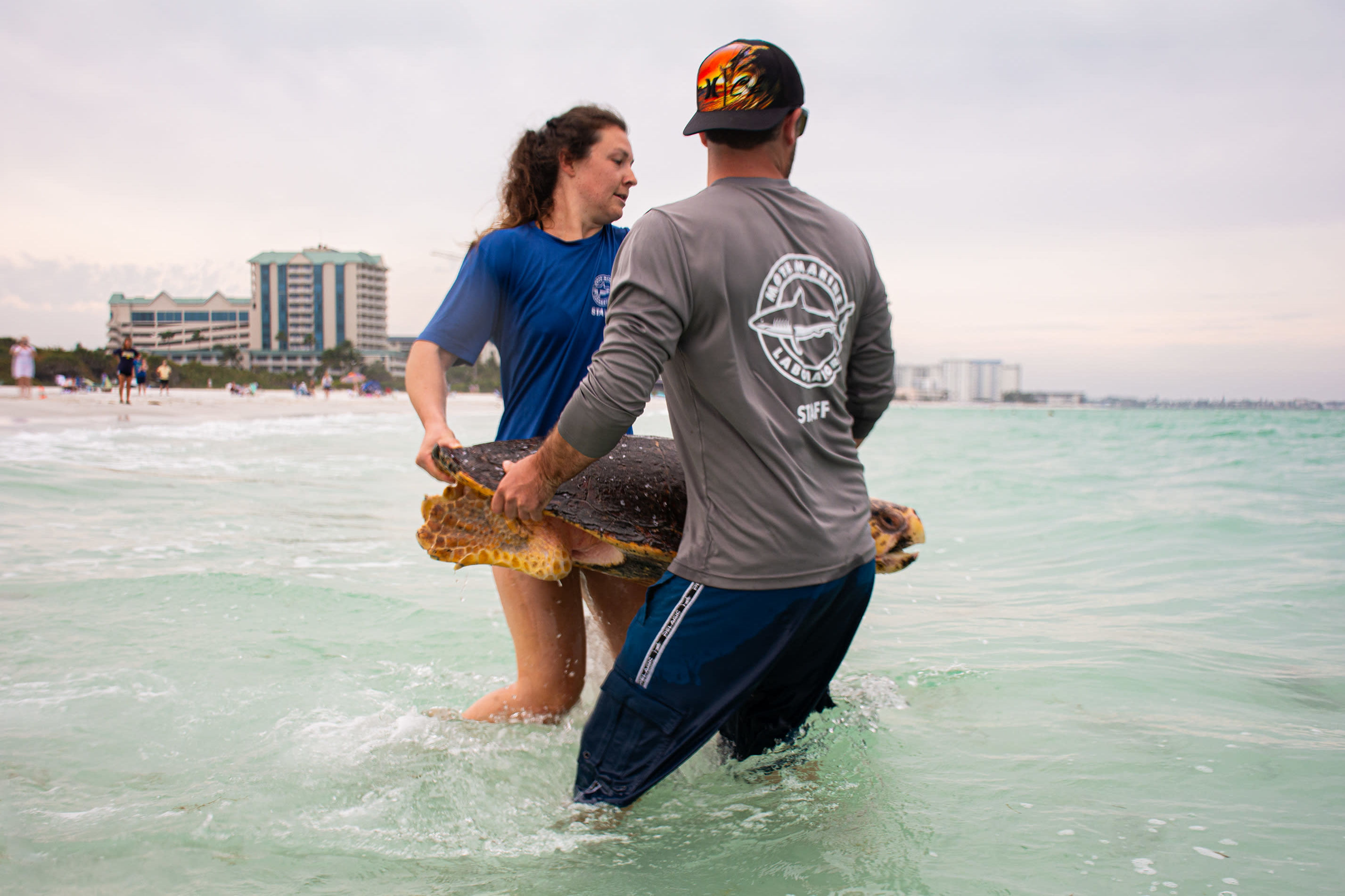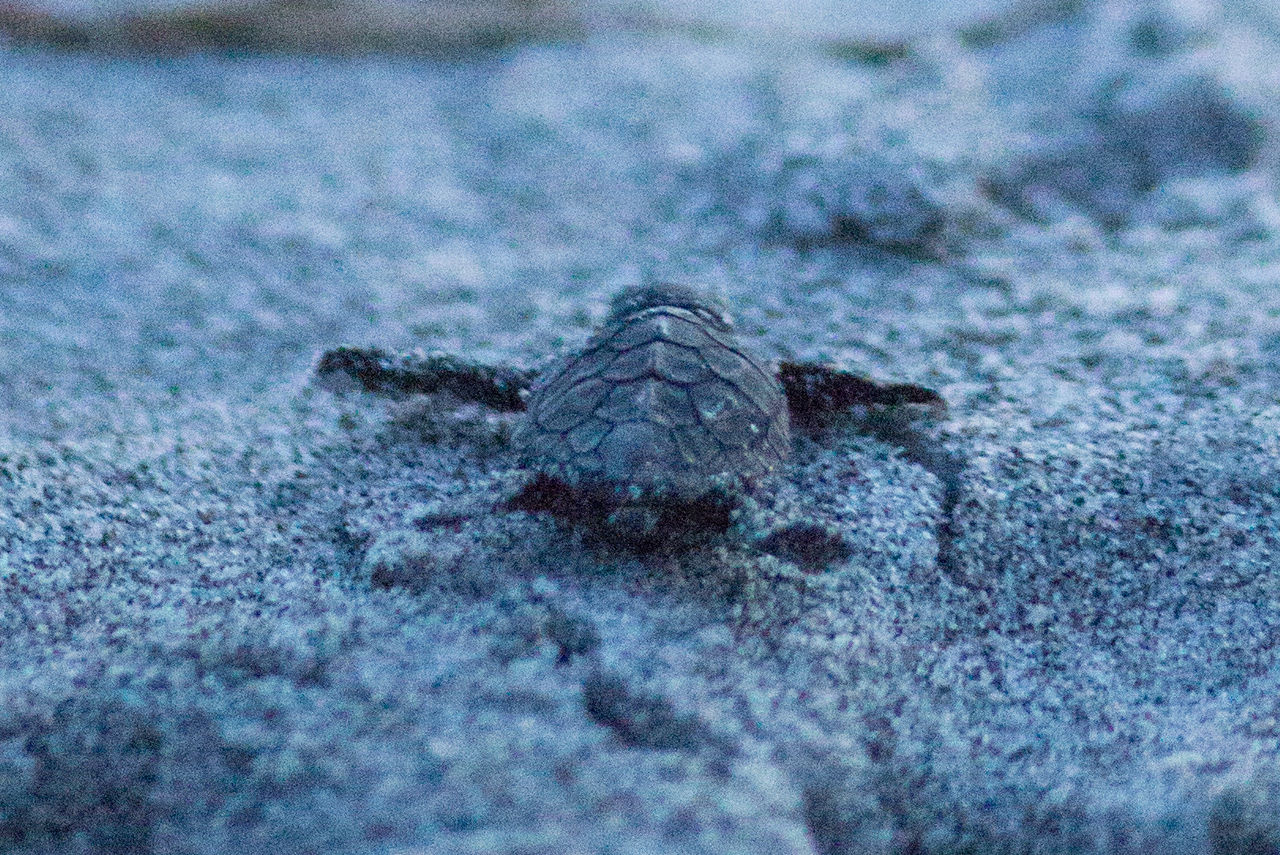Want to Help Mote Staff, Learn Something and Have Fun? Try Shark Encounter.
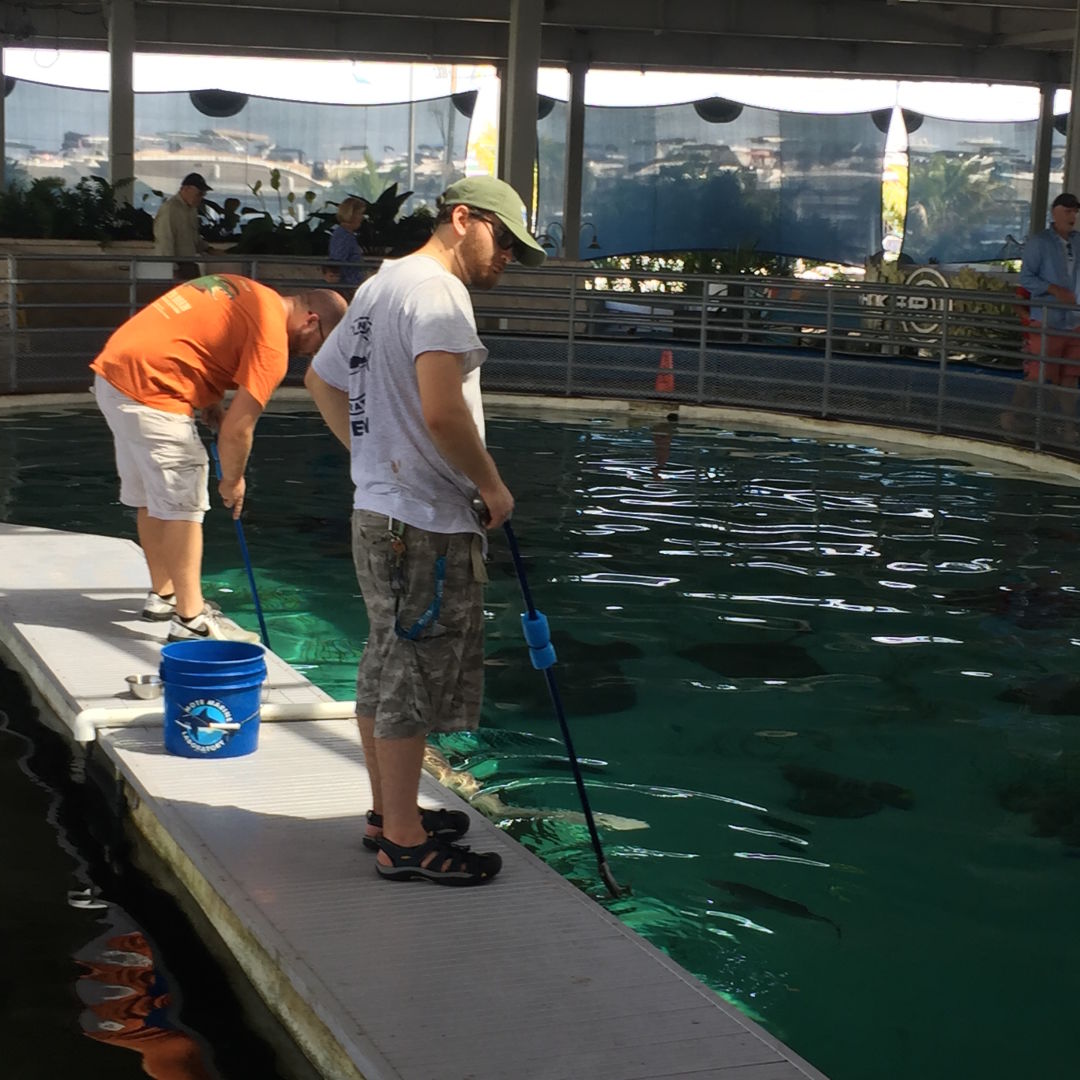
Mote staff feeds the sharks Monday, Wednesday and Friday at 10:30 a.m.
Image: Rick Morgan
When you think of sharks feeding, a dramatic Hollywood image probably comes to mind: blood, guts and sharks chomping at anything they can find.
Well, you can feed sharks at Mote Marine Laboratory and Aquarium without the gory spectacle. Instead, Mote offers a fun, controlled shark-feeding experience that educates participants and helps the staff. Senior aquarium biologist Michele Taylor runs the shark-feeding experience, called the “Shark Encounter,” and has worked at Mote for 12 years.
“When I saw Jaws, I didn’t see a scary monster,” Taylor says. “I saw a beautiful creature.”
Eight years ago, she asked if she could target-train Mote’s sharks.
Target-training sharks requires staff to place a sign with a colorful design underwater. Staff then feeds one species of shark when they approach the design. When a different design is placed underwater, staff feeds a different species of shark. Through positive reinforcement, Taylor has trained Mote’s different shark species to approach their unique design when it’s time to eat.
The 135,000-gallon tank houses blacknose sharks (who feed at a yellow sign with black stripes), sandbar sharks (blue triangle with black stripes) and nurse sharks (one feeds at a black X and another at a white X). Feeding sharks in this controlled manner ensures each shark eats the correct amount, and allows Taylor to give the sharks specific medicine as needed.
Taylor feeds the sharks every Monday, Wednesday and Friday at 10:30 a.m, and participants can join on Wednesdays. Shark Encounter follows a set routine. Participants first feed Mote's rays and Goliath grouper. The massive grouper knows when feeding time is near, and makes a sound with its mouth that reverberates through the tank.
“It’s kind of a warning thump,” Taylor says. “For us, it’s a hurry-up-so-you-can-come-and-feed-me thump.”
Participants feed the grouper and the rays with tongs that are about four feet long. The food is cut up bait fish, like blue runner, herring, mackerel and mullet. The rays hover over the end of the tongs, and the piece of fish in your tongs disappears after you release the food. The 110-pound grouper eats with such powerful suction that you release the bait fish a few inches away from its mouth and let him suck it in.
Before feeding the sharks, Taylor and the staff conduct “pre-broadcast.” They throw bait fish that's cut up into small pieces in the water for the smaller fish in the tank (the sharks don’t eat their smaller tankmates because they know a full-service buffet is coming three times a week).
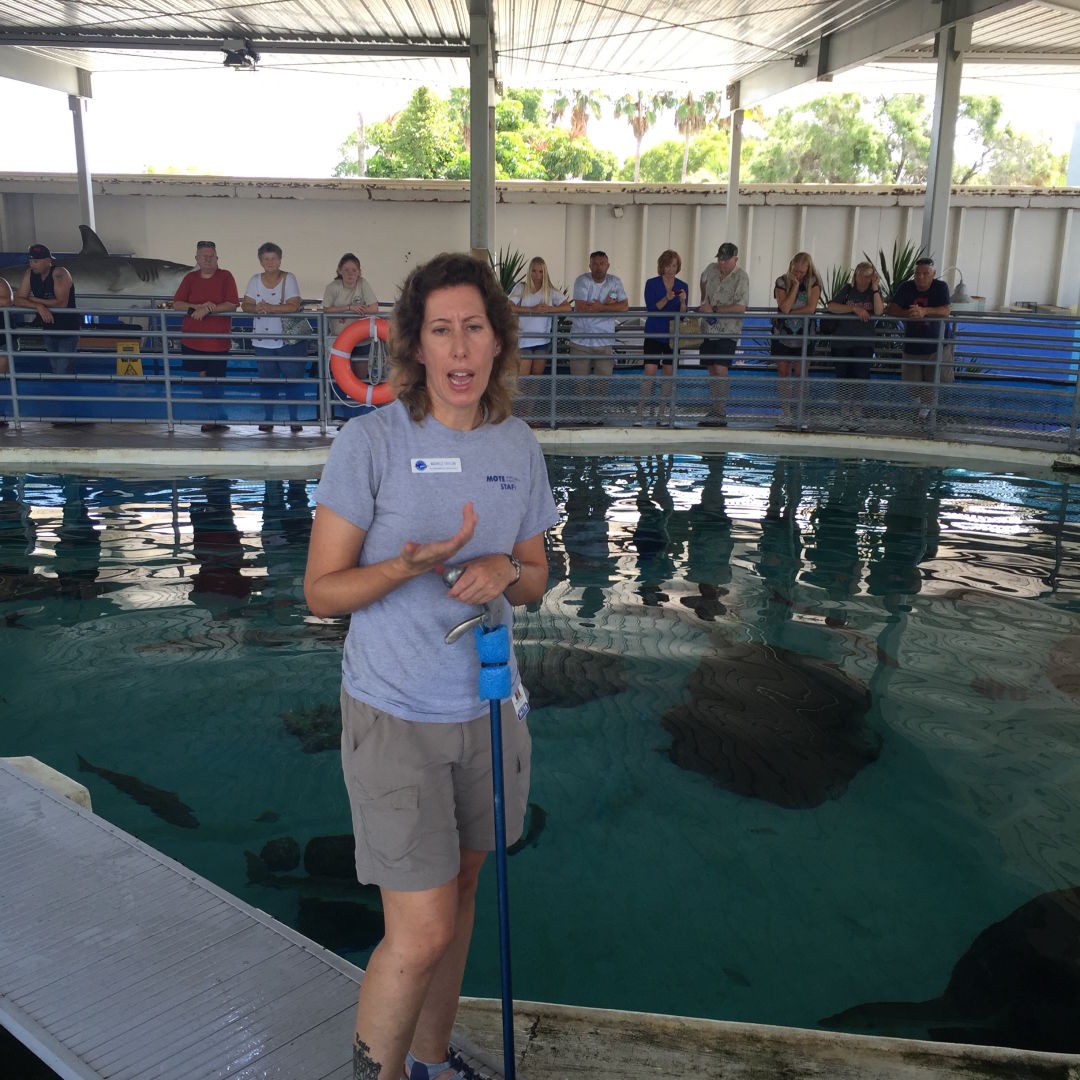
Michele Taylor trained the sharks at Mote to eat at specific targets eight years ago.
Image: Rick Morgan
Shark Encounter’s main event is the narrated shark feeding. Taylor and the staff place the designs underwater, and participants put a big piece of bait fish in their feeding tongs. Feeding the sharks sounds easy, but it’s actually tricky. Taylor describes the sharks as "spoiled." They won’t look for food or go out of their way to get it, so you have to bring the food to their mouths as they swim by the sign. If you don’t release the food at the right time and place, it might sink and become extra food for the Goliath grouper.
The experience ends with a “post-broadcast.” You cut up bait fish even smaller than in the pre-broadcast and toss it into the water, allowing the smallest fish in the tank to eat. Gloves and a chainmail hand protector ensure you don’t cut yourself or get too smelly when preparing the food.
And while all of this is happening, Shark Encounter participants must keep an eye out for a white egret, a bird Taylor jokingly calls her "nemesis." Taylor says the same white egret shows up every time and tries to steal the food, forcing her to constantly stare the bird down.
Taylor says she didn’t start Shark Encounter with the goal of entertaining visitors. She target-trained the sharks to benefit the sharks, not to create an attraction. But because the process is so interesting, participants are now able to attend. Still, the main goal remains caring for the sharks.
Taylor tries to educate and entertain participants, all while they perform a vital task for Mote. She only allows up to six people to join her: three people feeding and three people observing close-up (the event is open to Mote visitors, so anyone can watch from a distance). More than six people and Taylor can’t ensure everyone is having fun and feeding correctly. She has guided people who are afraid of sharks through the encounter, and she says she saw the fear turn into respect.
